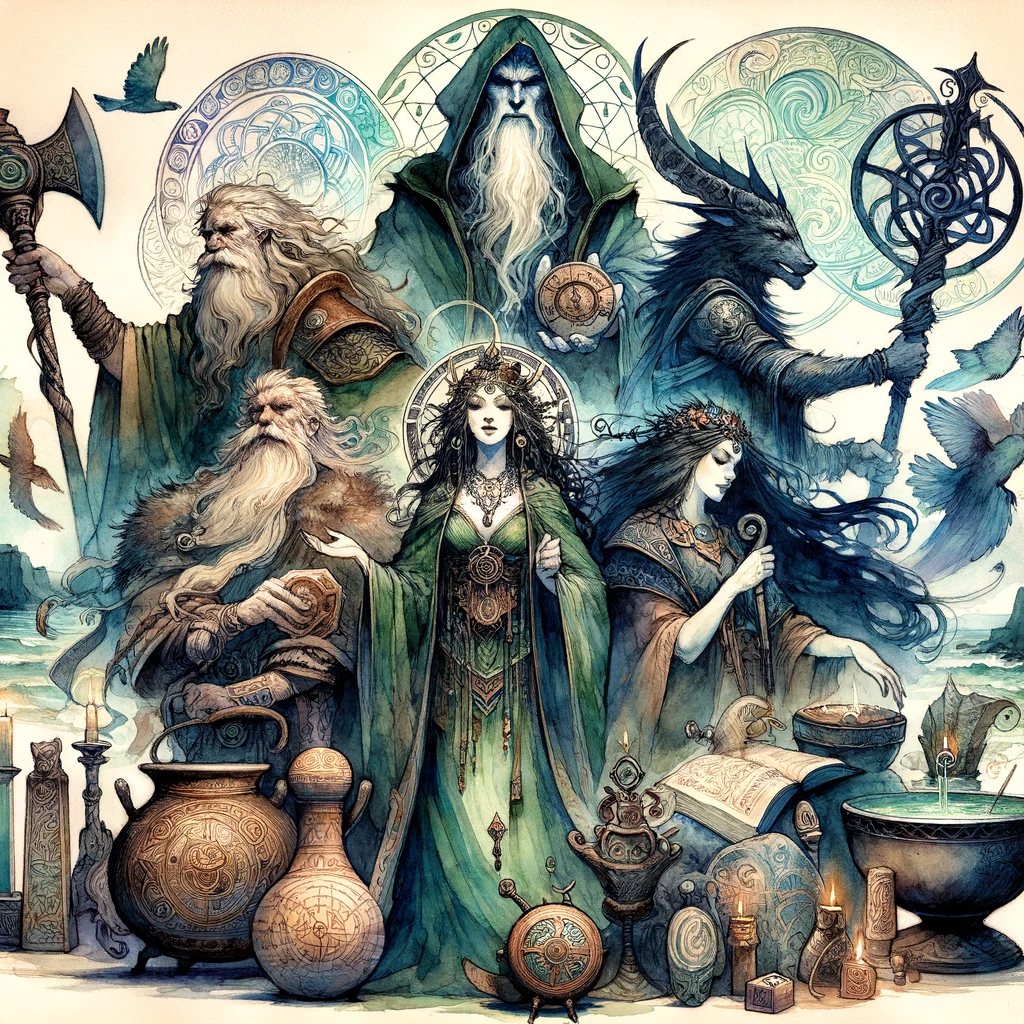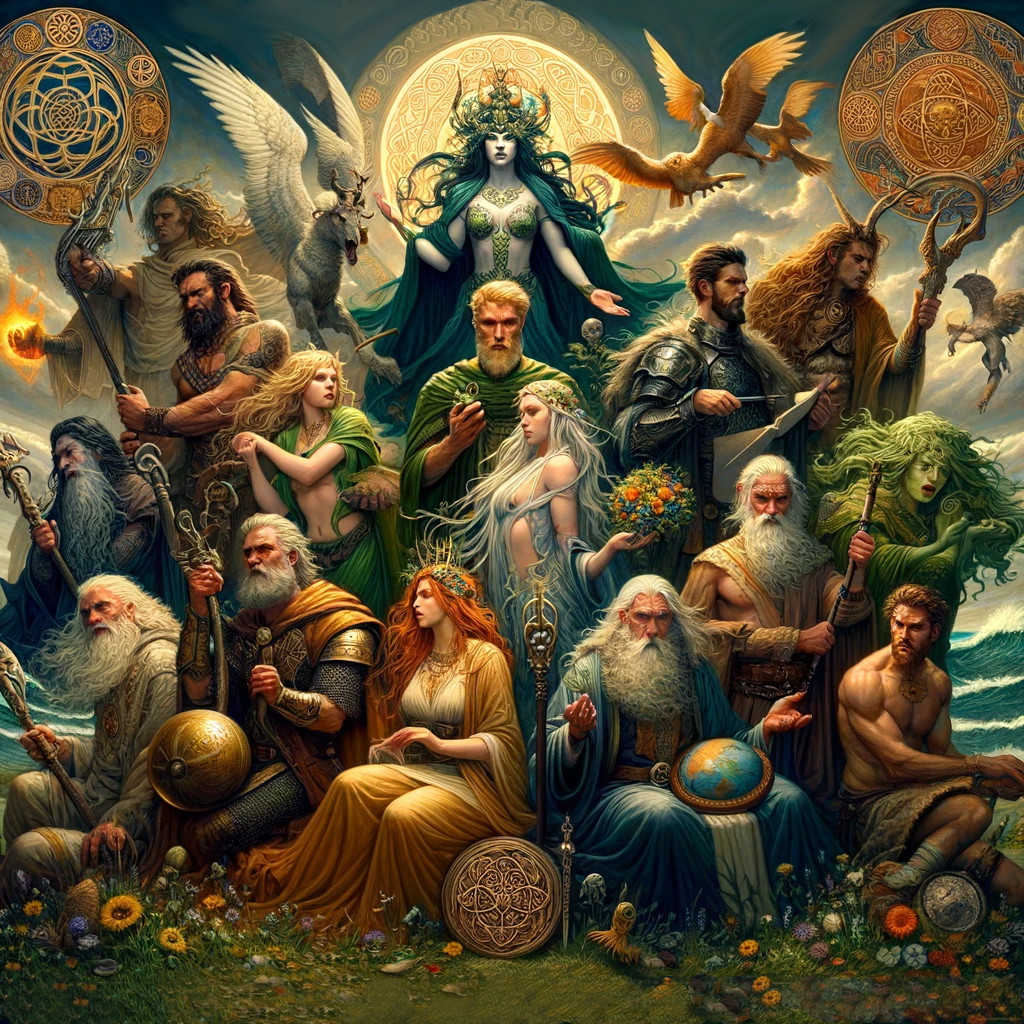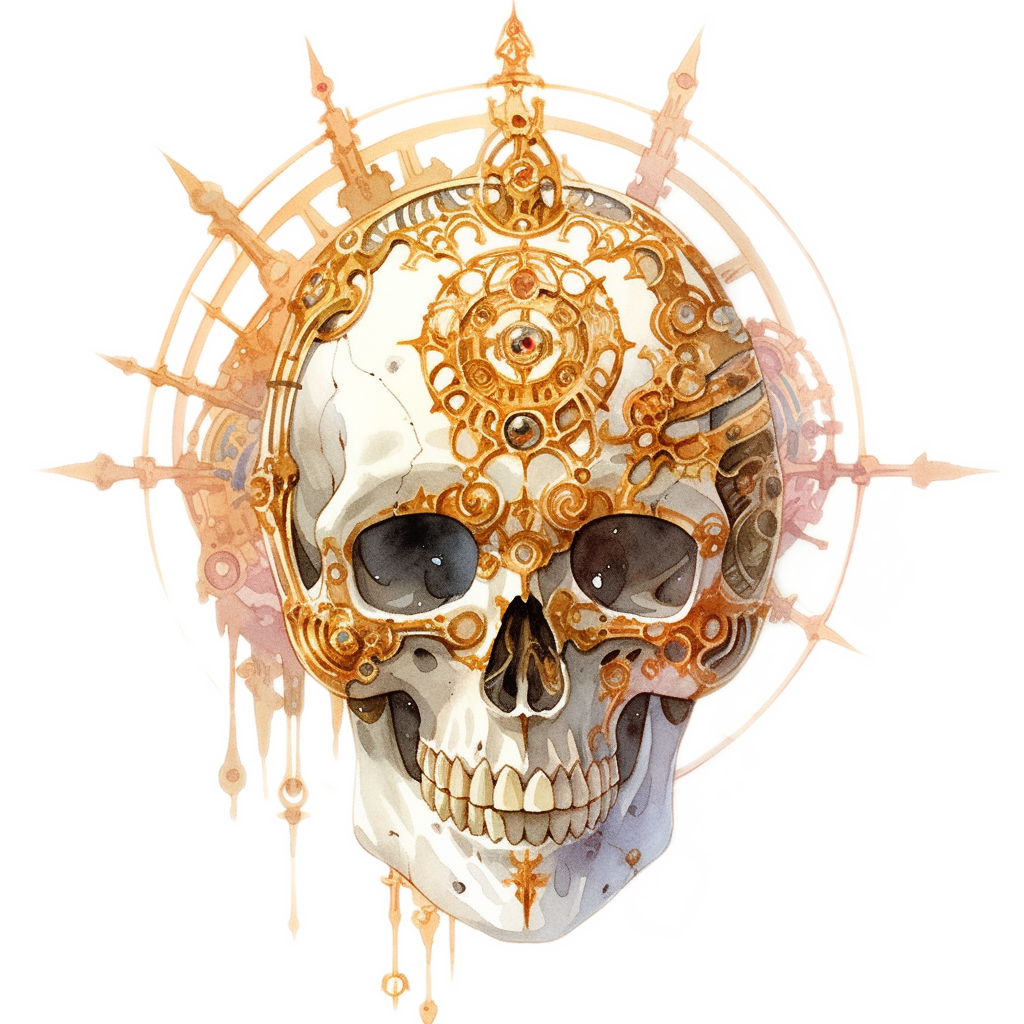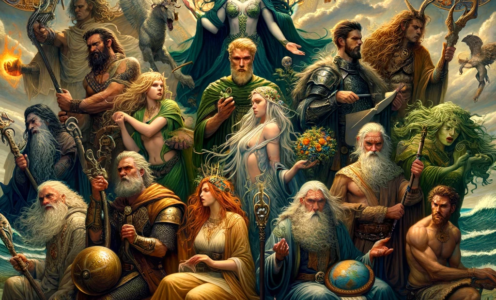The Celtic Pantheon
Mimir, show me: Celtic Powers | Realms | Tuatha de Danann Powers | Realms | Gaulish Powers | Realms | Welsh and Briton Powers | Realms
The Celtic Pantheon is a many-headed beast. The Celtic people have spread over a large area of many Prime worlds, and have diverse beliefs—it turns out ‘Celtic’ refers more to the origin of their similar languages as much as anything. The Celtic ‘pantheon’ is similarly a loose collection of several groups of powers, only with significant overlap, and the same power adopting different names and portfolios in different Celtic cultures.
The Pantheon is easiest to imagine in three separate, but related, groups:
The Tuatha dé Danann (children of Dana), who conquered the formorians and fir bolg and flourished in the Emerald Isle. Their leader is the Daghdha, who controls the weather, crops and therefore holds the reins of life and death in the Lands. Other important powers in this group are the Morrigan, the merciless goddess of war and fate, who often appears as a trio of sisters; and Brigid, a power associated with healing, fire, poetry and smith craft. The majority of the Tuatha de Danann (and many other Celtic powers) share a large realm called Tir na Og (the land of youth).
The Gaulish Celts venerate a group of powers who are heavily influenced by the Roman Pantheon, following conquest. Taranis, the god of thunder, is like a more aggressive version of Jupiter-Zeus, and leads this group of powers. Cernunnos, power of hunting and the wilds, and Epona, the deity of horses, are also important members of the Gaulish group.
The final group are powers worshipped by the Welsh and Britons, who are different but have many deities in common. Their influence is as deep as the valleys they hail from. The leader of these powers is Math Mathonwy, the god of magic, who has selfishly grabbed control of the group, and seeks ever-greater power amongst the other Celtic powers. Arawn, the god of the Underworld also wields great influence amongst the Celtic powers. Finally, Belenus the god of the sun rounds out this set of influential gods.
While the Celtic Powers are divided into these three factions, each of which has different leaders, some powers site in more than one group, and others have different names in different lands. Powers are complicated beings, cutter, and resist catergorisation that mere mortals can understand. However, all of these powers are have their Celtic roots in common, and see themselves as a part of a larger group—the Celtic Pantheon.
The Powers of the Celts

- The Tuatha Dé Danann
- Aengus (power of poetry and love, aka Angus mac Og)
- Áine (power of summer and wealth)
- Airmed (power of herbalism)
- Brigid (power of rivers, livestock, fertility and fire, aka Brigantia)
- Cú Chulainn (power of war, challenges)
- the Daghda (leader of the Tuatha de Danann and power of weather and crops)
- Dian Cécht (power of medicine and healing, aka Diancecht)
- Goibhniu (power of smiths and healing)
- Lugh (power of arts, travel, and commerce)
- Manannan mac Lir (power of oceans and sea creatures)
- the Morrigan (power of battle)
- Nuada (power of war and warriors)
- Oghma (power of speech and writing)
- Powers of the Gauls
- Powers of the Welsh and Britons
Source: Jon Winter-Holt, mimir.net
Many Thanks To: Alexander Crim for super helpful discussions about Celtic mythology, and Liam Cuthbert for help with pronunciation of some of the tricker names.


